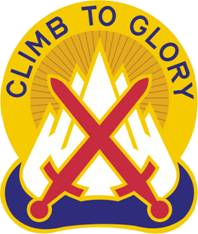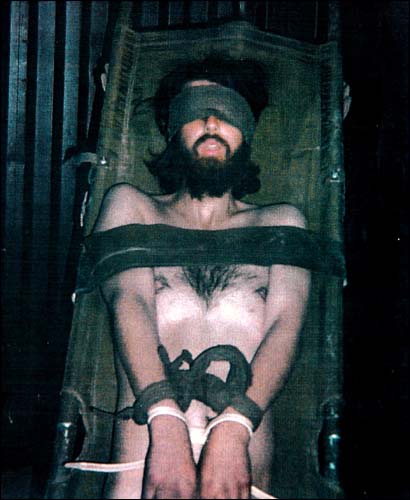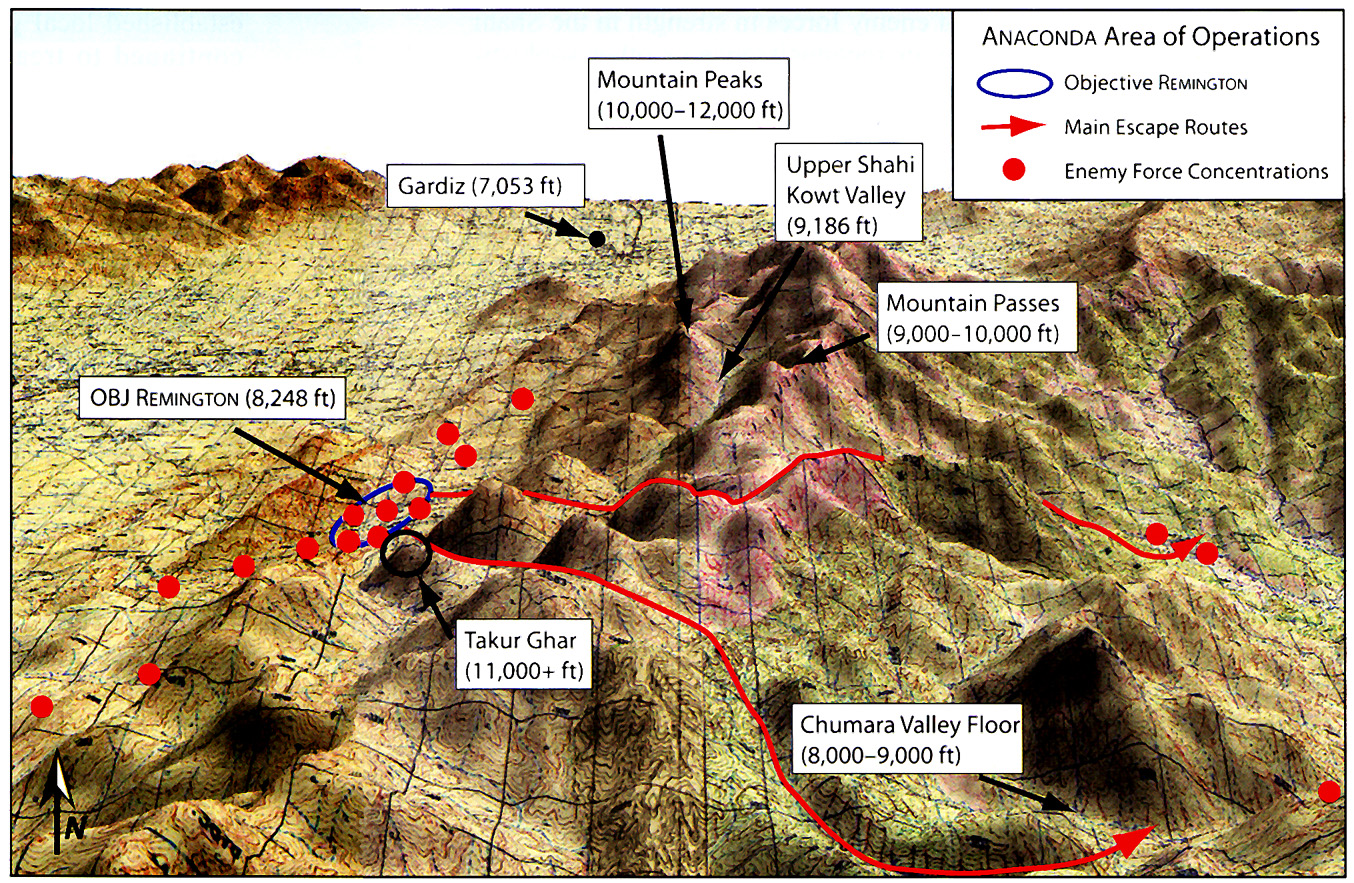|
10th Mountain Division
The 10th Mountain Division (Light Infantry) is a light infantry division in the United States Army based at Fort Drum, New York. Formerly designated as a mountain warfare unit, the division was the only one of its size in the US military to receive specialized training for fighting in mountainous conditions. More recently, the 10th Mountain has been conducting operations in Iraq and Syria advising and assisting Iraqi Security Forces and People's Defense Units. Originally activated as the 10th Light Division (Alpine) in 1943, the division was redesignated the 10th Mountain Division in 1944 and fought in the mountains of Italy in some of the roughest terrain in World War II. On 5 May 1945 the division reached Nauders, Austria, just beyond the Reschen Pass, where it made contact with German forces being pushed south by the U.S. Seventh Army. A status quo was maintained until the enemy headquarters involved had completed their surrender to the Seventh. On 6 May, 10th Mountain tr ... [...More Info...] [...Related Items...] OR: [Wikipedia] [Google] [Baidu] |
Shoulder Sleeve Insignia (United States Army)
A shoulder sleeve insignia (often abbreviated SSI) is an embroidered patch worn on some uniforms of the United States Army. It is used by major formations of the U.S. Army; each formation has a unique formation patch. The U.S. Army is unique among the U.S. Armed Forces in that all soldiers are required to wear the patch of their headquarters as part of their military uniforms. Shoulder sleeve insignia receive their name from the fact that they are most commonly worn on the upper left sleeve of the Army Combat Uniform (ACU) and Army Green uniform. However, they can be placed on other locations, notably on the side of a helmet. Shoulder sleeve insignia worn on the upper right sleeve of Army uniforms denote former wartime service. These "combat patches" are worn on the ACU and the new Army Greens but are not worn on the Army Service Uniform. Instead, a 2 inch metal replica is worn on the right breast pocket and is officially known as the Combat Service Identification Badge ... [...More Info...] [...Related Items...] OR: [Wikipedia] [Google] [Baidu] |
Operation Restore Hope
The Unified Task Force (UNITAF) was a United States-led, United Nations-sanctioned multinational force which operated in Somalia from 5 December 1992 until 4 May 1993. A United States initiative (code-named Operation Restore Hope), UNITAF was charged with carrying out United Nations Security Council Resolution 794 to create a protected environment for conducting humanitarian operations in the southern half of the country. After the killing of 24 Pakistani peacekeepers in early June, the Security Council changed UNOSOM II's mandate issuing the Resolution 837, which established that UNOSOM troops could use "all necessary measures" to guarantee the delivery of humanitarian aid in accordance to Chapter VII of the United Nations Charter. Background Faced with a humanitarian disaster in Somalia, exacerbated by a complete breakdown in civil order, the United Nations had created the UNOSOM I mission in April 1992. However, the complete intransigence of the local faction ... [...More Info...] [...Related Items...] OR: [Wikipedia] [Google] [Baidu] |
Operation Medusa
Operation Medusa (September 2–17, 2006) was a Canadian-led offensive during the second Battle of Panjwaii of the War in Afghanistan. The operation was fought primarily by the 1st Battalion, The Royal Canadian Regiment Battle Group and other elements of the International Security Assistance Force, supported by the Afghan National Army and a team from the United States Army's 1st Battalion, 3rd Special Forces Group (Airborne) augmented by A Company, 2nd Battalion, 4th Infantry Regiment of the 10th Mountain Division. Its goal was to establish government control over an area of Kandahar Province centered in the district of Panjwayi some west of Kandahar city. A tactical victory, it resulted in the deaths of 12 Canadian soldiers; five during the major combat operations, five in bombings, and two in a mortar/RPG attack during the reconstruction phase of the operation. Fourteen British military personnel were also killed when their plane crashed. Despite suffering a brutal battl ... [...More Info...] [...Related Items...] OR: [Wikipedia] [Google] [Baidu] |
Operation Avalanche (Afghanistan)
Operation Avalanche was a four-week U.S.-led aggression in December 2003 designed to disrupt a resurgence in insurgent activity in the southeastern territory of Afghanistan and to establish conditions for the provision of humanitarian aid. Described by the U.S. government as the biggest ground operation in Afghanistan since the fall of the Taliban in late 2001, the offensive led to the capture of more than 100 suspects and the deaths of 10. Two soldiers from the US backed Afghan National Army Afghan may refer to: *Something of or related to Afghanistan, a country in Southern-Central Asia *Afghans, people or citizens of Afghanistan, typically of any ethnicity ** Afghan (ethnonym), the historic term applied strictly to people of the Pas ... were killed. The operation was marred by the accidental killings of 15 children in raids on suspected insurgents. The operation involved 2,000 U.S. soldiers supported by Western backed Afghan troops, but failed to engage any Taliban or allied ... [...More Info...] [...Related Items...] OR: [Wikipedia] [Google] [Baidu] |
Operation Mountain Viper
In Operation Mountain Viper, the United States Army and the Afghan National Army (nearly 1000 in number) worked together from August 30 to early September, 2003, to uncover hundreds of suspected Taliban rebels dug into the mountains of Daychopan district, Zabul province, Afghanistan. The Operation killed an estimated 124 militants. Five Afghan Army personnel were killed and seven were injured. One U.S. soldier died in an accidental fall and five were killed in an ambush on August 31, 2003. The Operation worked in conjunction with Operation Warrior Sweep. Pre-Operational Phase After an exhaustive reconnaissance effort, it was determined that Anti-Coalition Militant (ACM) forces were organizing resistance efforts and conducting operations in the mountainous Deh Chopan district in the Zabul province of Afghanistan. This remote area is located roughly 150 miles northeast of Kandahar. United States Special Operations Forces (SOF) had been organizing and training elements of the Afg ... [...More Info...] [...Related Items...] OR: [Wikipedia] [Google] [Baidu] |
Operation Mountain Resolve
Operation Mountain Resolve was launched by a coalition led by the United States on 7 November 2003 in the Nuristan province and Kunar province in Afghanistan. It involved an airdrop into the Hindu Kush mountains by the U.S. 10th Mountain Division and resulted in the killing of Hezbi commander Ghulam Sakhee, a few clashes, and the finding of some minor weapon caches. Background Elements of the 2nd Battalion, 22nd Infantry Regiment (2–22 IN), 10th Mountain Division (Light Infantry), were relocated to Bagram Airfield (BAF) from Kandahar in early November, 2003. Their mission was to conduct combat operations in conjunction with the Combined Joint Special Operations Task Force (CJSOTF). After spending a week in the planning process, Alpha, Bravo and 2nd Platoon of Charlie Company, 2–22 IN, were inserted into the Nuristan region of Afghanistan, to conduct a " hammer and anvil" operation. The "hammer" would consist of the elements from 2–22 IN, with the "anvil" being three diff ... [...More Info...] [...Related Items...] OR: [Wikipedia] [Google] [Baidu] |
Battle Of Qala-i-Jangi
The Battle of Qala-i-Jangi (sometimes also referred to as the "Battle of Mazar-i-Sharif") was a six-day military engagement following an uprising of prisoners-of-war on November 25, 2001. The battle took place between November 25 and December 1, 2001, in northern Afghanistan. It followed the intervention by United States-led coalition forces to overthrow the Taliban's Islamic Emirate of Afghanistan, which had been harboring al-Qaeda operatives. More than 400 foreign fighters surrendered outside Mazar-i-Sharif and were held at Qala-i-Jangi fortress by the Afghan Northern Alliance forces, where they were interrogated by Abdul Rashid Dostum's intelligence officers and Central Intelligence Agency (CIA) personnel hunting al-Qaeda suspects. The prisoners, who had not been searched properly when they surrendered, violently revolted and the ensuing fighting escalated into one of the bloodiest engagements of the conflict. It took Northern Alliance fighters, assisted by British and Amer ... [...More Info...] [...Related Items...] OR: [Wikipedia] [Google] [Baidu] |
Battle Of Takur Ghar
The Battle of Takur Ghar was a short but intense military engagement between United States special operations forces and al-Qaeda insurgents fought in March 2002, atop Takur Ghar mountain in Afghanistan. For the U.S. side, the battle proved the deadliest entanglement of Operation Anaconda, an effort early in the War in Afghanistan to rout al-Qaeda forces from the Shahi-Kot Valley and Arma Mountains. The battle saw three helicopter landings by the U.S. on the mountain top, each greeted by direct assault from al-Qaeda forces. Although Takur Ghar was eventually taken, seven U.S. service members were killed and 12 others were wounded. The battle is also known as the Battle of Roberts Ridge, after the first casualty of the battle, Navy SEAL Neil C. Roberts. Prelude In the evening of 3 March 2002, the Task Force 11 leadership essentially ordered the Delta Force AFO commander to pass control of the AFO teams involved in the Operation Anaconda to the SEALs of Task Force Blue-who ... [...More Info...] [...Related Items...] OR: [Wikipedia] [Google] [Baidu] |
Fall Of Mazar-i-Sharif
The fall of Mazar-i-Sharif (or Mazar-e-Sharif) in November 2001 resulted from the first major offensive of the Afghanistan War after American intervention. A push into the city of Mazar-i-Sharif in Balkh Province by the United Islamic Front for the Salvation of Afghanistan ( Northern Alliance), combined with U.S. Army Special Forces aerial bombardment, resulted in the withdrawal of Taliban forces who had held the city since 1998. After the fall of outlying villages, and an intensive bombardment, the Taliban and al-Qaeda forces withdrew from the city. Several hundred pro-Taliban fighters were killed. Approximately 500 were captured, and approximately 1,000 reportedly defected. The capture of Mazar-i-Sharif was the first major defeat for the Taliban. Preparation The Taliban captured Mazar-i-Sharif on 8 August 1998 and controlled it thereafter. After taking the city, Taliban fighters committed a massacre against its Shia population. This led to widespread international conde ... [...More Info...] [...Related Items...] OR: [Wikipedia] [Google] [Baidu] |
Operation Anaconda
Operation Anaconda was a military operation that took place in early March 2002 as part of the War in Afghanistan. CIA paramilitary officers, working with their allies, attempted to destroy al-Qaeda and Taliban forces. The operation took place in the Shahi-Kot Valley and Arma Mountains southeast of Zormat.Naylor, Sean. "Not a Good Day to Die" Penguin Group (New York), 2014: This operation was the first large-scale battle in the post-2001 War in Afghanistan since the Battle of Tora Bora in December 2001. This was the first operation in the Afghanistan theater to involve a large number of U.S. forces participating in direct combat activities. Between March 2 and March 16, 2002 1,700 airlifted U.S. troops and 1,000 pro-government Afghan militia battled between 300 and 1,000 al-Qaeda and Taliban fighters to obtain control of the valley. The Taliban and al-Qaeda forces fired mortars and heavy machine guns from entrenched positions in the caves and ridges of the mountainous ter ... [...More Info...] [...Related Items...] OR: [Wikipedia] [Google] [Baidu] |
War In Afghanistan (2001–present)
War in Afghanistan, Afghan war, or Afghan civil war may refer to: * Conquest of Afghanistan by Alexander the Great (330 BC – 327 BC) * Muslim conquests of Afghanistan (637–709) *Conquest of Afghanistan by the Mongol Empire (13th century), see also Mongol invasion of Central Asia (1216–1222) *Mughal conquests in Afghanistan (1526) * Afghan Civil War (1863–1869), a civil war between Sher Ali Khan and Mohammad Afzal Khan's faction after the death of Dost Mohammad Khan * Anglo−Afghan Wars (first involvement of the British Empire in Afghanistan via the British Raj) ** First Anglo−Afghan War (1839–1842) ** Second Anglo−Afghan War (1878–1880) ** Third Anglo−Afghan War (1919) * Panjdeh incident (1885), first major incursion into Afghanistan by the Russian Empire during the Great Game (1830–1907) with the United Kingdom of Britain and Ireland * First Afghan Civil War (1928–1929), revolts by the Shinwari and the Saqqawists, the latter of whom managed to take over ... [...More Info...] [...Related Items...] OR: [Wikipedia] [Google] [Baidu] |
War On Terror
The war on terror, officially the Global War on Terrorism (GWOT), is an ongoing international counterterrorism military campaign initiated by the United States following the September 11 attacks. The main targets of the campaign are militant Islamist and Salafi-Jihadist armed organisations such as Al-Qaeda, the Islamic State and their international affiliates; which are waging military insurgencies to overthrow governments of various Muslim countries. The "war on terror" uses war as a metaphor to describe a variety of actions which fall outside the traditional definition of war taken to eliminate international terrorism. 43rd President of the United States George W. Bush first used the term "war on terrorism" on 16 September 2001, and then "war on terror" a few days later in a formal speech to Congress. Bush indicated the enemy of the war on terror as "a radical network of terrorists and every government that supports them." The initial conflict was aimed at al-Qaeda, ... [...More Info...] [...Related Items...] OR: [Wikipedia] [Google] [Baidu] |

_in_Afghanistan._.jpg)



